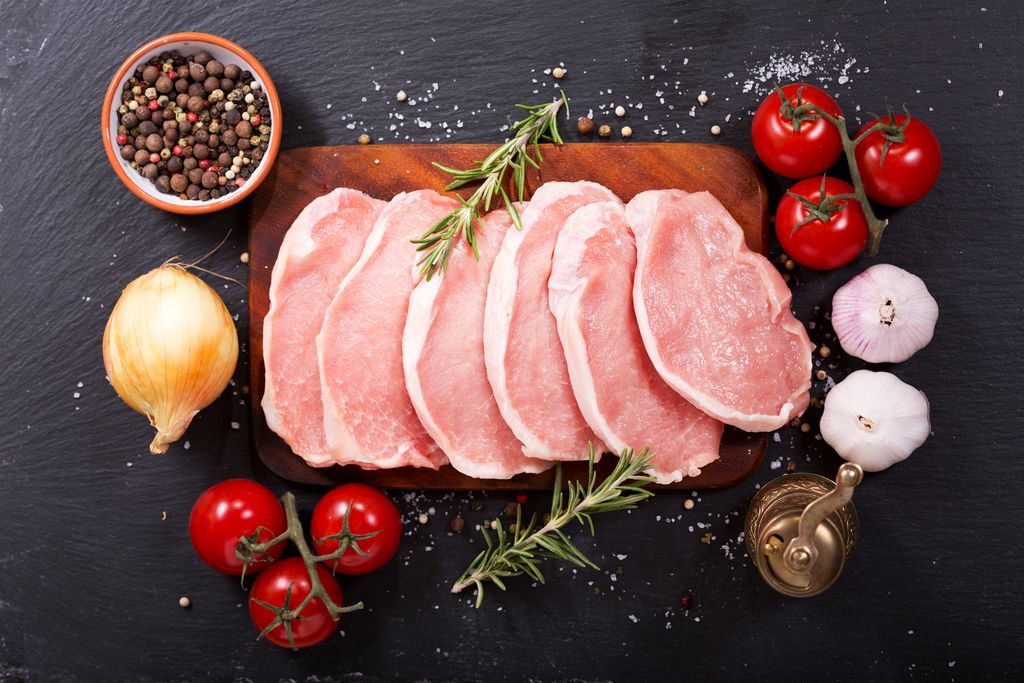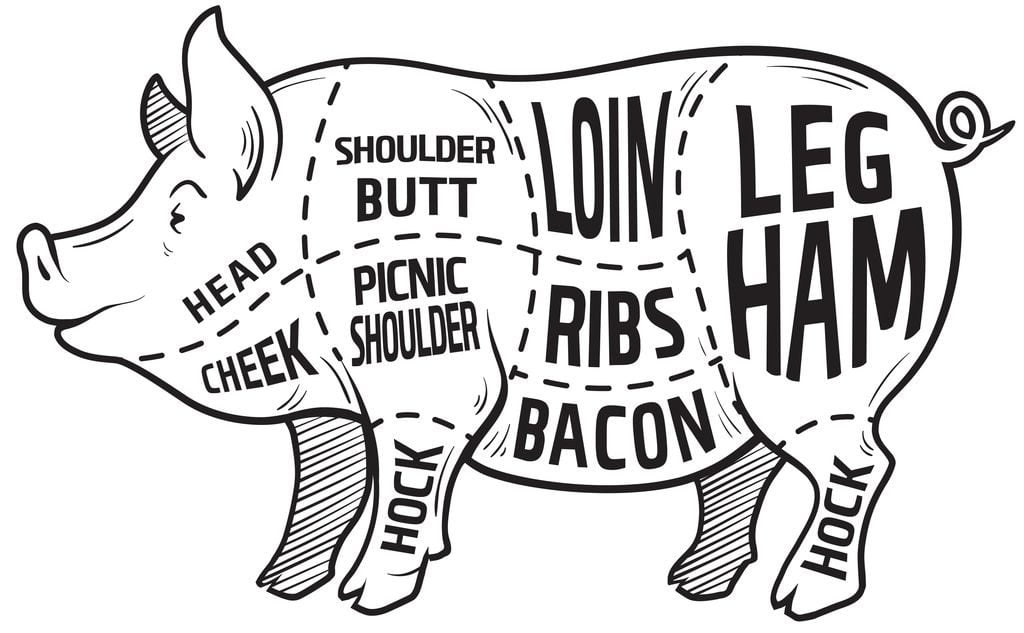Pork
Pork is the worlds most widely consumed meat and the reasons why are obvious, its flavourful, versatile and economical.

Pork is the worlds most widely consumed meat, it’s used to make sausage, ham, bacon just to name a few! It can be used in burgers, meatballs, stir-fries and many other dishes.
It’s important to understand what you are eating and where it comes from. Pork is divided into sections called primal cuts. Different countries and cultures make these cuts in different ways, in the UK the primal cuts are the Shoulder, Belly, Loin, Leg and Cheek.

Knowing about the primal cuts and their characteristics can help you chose what meat is best for what you are cooking!
It’s also best whenever possible to buy free-range or organic pork as it means it had a good quality of life.
Shoulder
The shoulder is a section of the that starts at the top of the neck and ends at the trotter. It is split into two sections, the “shoulder butt” at the top and the “shoulder picnic” at the bottom. These cuts tend to be quite tough but tenderise the longer you cook them. This makes them perfect for slow cooking like stews and roasts. Butchers use this meat to make sausages, cured meats and ground pork (or minced pork)!
The bottom of the shoulder picnic section is cut to make ham hock (also known as pork knuckle).
Belly
The belly has a multitude of different uses and is one of the most versatile cuts. Meat from this part tends to be tender and succulent. The belly is used to make bacon and pancetta! Spare ribs also come from the belly.
Loin
The loin is the upper middle section, from the loin section you can get loin cuts, tenderloin ( also called the fillet), rib joints and pork chops. Pork loin in traditionally used for slow roasting, it can either be cooked whole or deboned.
The tenderloin is the softest part of the pig. Its a long thin muscle with no bones found in the centre of the loin section. It and can be cooked whole or cut into medallions and fried or grilled. If you cook the tenderloin for too long it becomes dry and tough.
Leg
The leg section is the whole back leg. The leg is a very versatile section, as the meat tends to be low in fat and lean. It can be roasted and cut into slices of ham or cured to make meats like prosciutto. In Spain, the leg is sometimes dry-cured whole for 18 months to make Serrano ham.
I can also be cut into roasting joints or roasted whole, the bottom of the leg section is frequently used to make ham hock.
Cheek
The cheek section is really fatty. It is used in sausages, some kinds of bacon, mince and to make the Italian cured meats guanciale which is traditionally used in carbonara!
Crackling
Crackling – also know as pork rind – is roasted pork skin. You get cracking when you roast pork, it becomes dark brown and really crispy. It is also used to make snacks like crispy pork scratchings.
Recipe suggestion: Pulled pork, Bolognese sauce (ragu), Lasagna, Quiche Loraine
Nutritional information of pork
Not all pork products are the same but in general, pork is high in protein, vitamins and minerals. However, it is important to know it is also high in fat and sodium (salt).
It is important not to consume too many highly processed pork products. It’s best to opt for high-quality, leaner cuts of pork.
The high protein content helps your body to maintain muscle mass easier. Pork also contains high levels of Thiamine, Selenium, Zinc, Vitamin B12, Vitamin B6, Niacin, Phosphorus and Iron.




